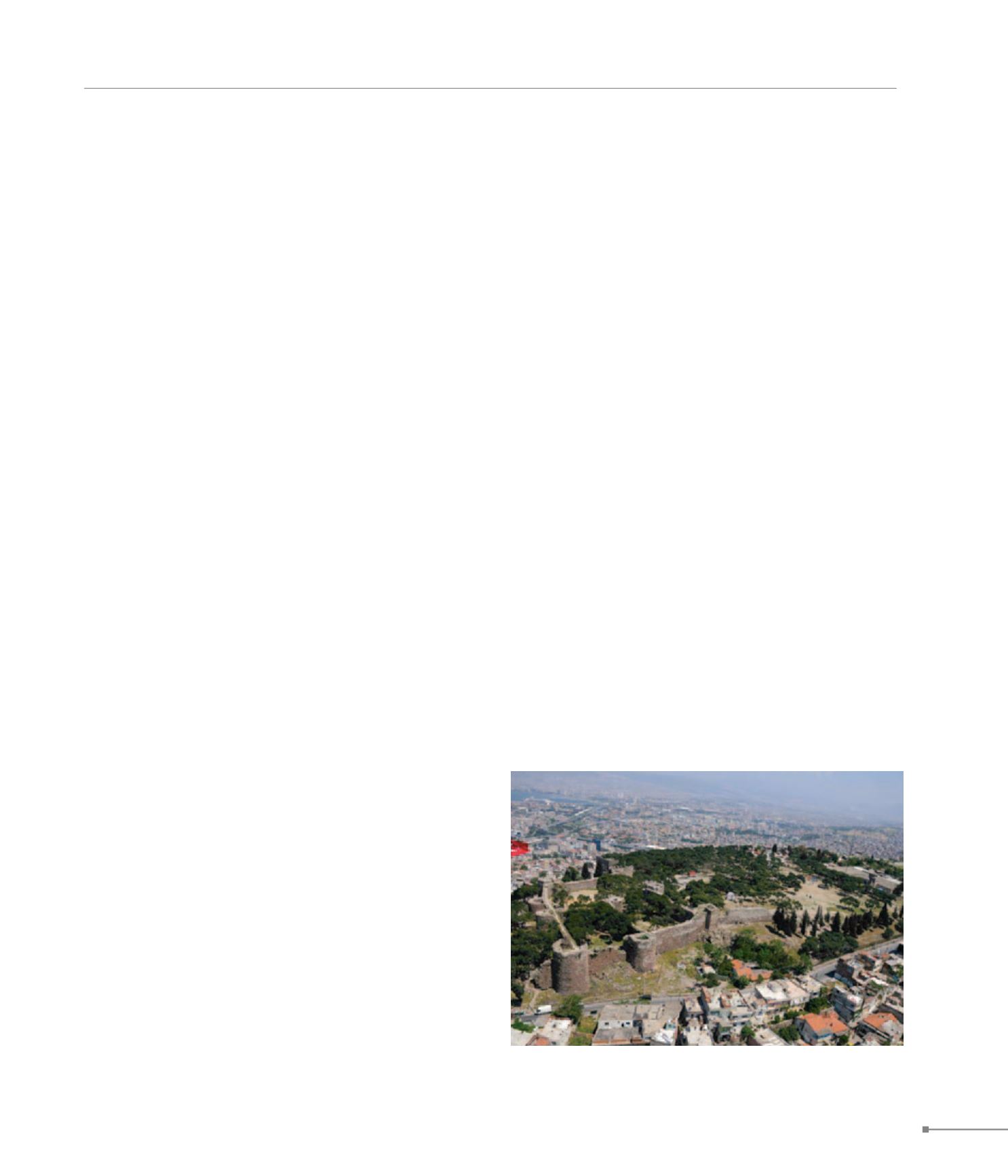
Izmir. Smyrna.
Çandarlı. Pitane.
COASTLINE OF ASIA MINOR AND EASTERN THRACE
305
556. Smyrna, Pagus Castle (Σμύρνη, κάστρο του Πάγου)
556.
Izmir. Smyrna.
Due to extensive construction work, very few remains of the
ancient and Early Christian city survive. The agora, which was
rebuilt after the destructive earthquake of the late 2nd c., is im-
pressive. No architectural remnants have been found from the
Early Christian and Mid-Byzantine period. The fortifications on
Pagus hill (repaired in the 14th and the 20th c.), constructed
with earlier building material, are dated to the time of the ruling
Laskaris family, emperors of Nicaea. At the Smyrna Museum
and at the agora there are numerous capitals and architectural
sculptures, most of which date from the Mid-Byzantine peri-
od. It seems that some of them do not originate from Smyrna
but were transferred here from elsewhere. At G
ü
lbah
ç
e, W of
Smyrna, on the road to Urla, the ruins of a three-aisled ba-
silica with narthex and atrium have been excavated. NW of
the basilica an annex contained the large, rectangular baptis-
tery. Mosaic floors with a founder’s inscription have also been
found. Parts of a three-aisled basilica with a three-apsed bema
have been revealed at Colophon, SW of Smyrna. The mar-
ble ambo featured 6th c. relief decoration of excellent quality.
Mid-Byzantine sculptural work, including a panel with unusual
decoration and an architrave with an inscription of 960, attest
a second building phase.
Aeolia
557.
Yeni Fo
ç
a. New Phocaea.
In 1275 Michael Palaeologus VIII captured Phocaea and the
alum mines located to the N. They were of major financial sig-
nificance, since the ore was exported to the West and was
used for the dyeing of textiles and leather. The communication
between the mines and the city was so precarious that a for-
tress had to be built by the coast close to the mines. Later, be-
tween 1286 and 1296, the Genoese established a small town,
i.e. New Phocaea, of which a few ruins survive.
558.
Cyme, near Alia
ğ
a.
During excavations in 1887 the Caesareion was revealed at
the forum, which was converted into a church in the Early
Christian period. Throughout the city there is scattered Ear-
ly Christian pottery, including examples of Zeuxippus ware,
but very few architectural sculptures. The Byzantine fortress,
partly sunk in the sea, has an unusual pentagonal shape and
towers. The houses that can be discerned are organised in
groups around yards. From the pottery dating from the late
12th c. to the early 15th c. it is inferred that the fortress was in
use during the same period.
559.
Ç
andarl
ı
. Pitane.
Pitane is located on the promontory SW of Pergamon. It is an
impressive castle renovated in 1955, with five high towers. It
was built by the Genoese, who occupied Phocaea in 1275 and
between 1286 and 1296 founded New Phocaea. The castle of
Pitane was built in the same period, and protected the bay to
the N and the commercial road inland.


